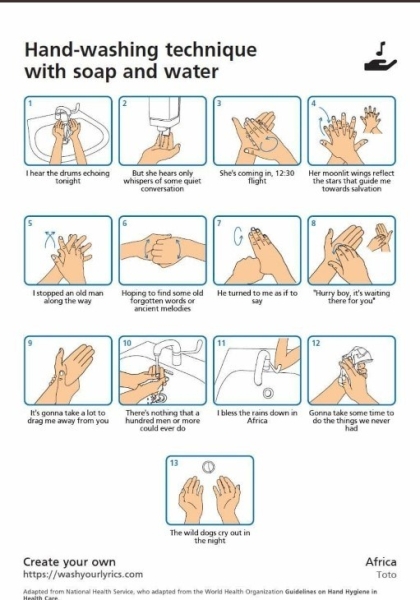(Adapted from On the shoulders of giants: Empower, enact, impact (Talbot & Korodaj, 2022). Presented at the National Education Summit, Melbourne and Brisbane).
For the majority of my career, I have had a number of mentors who provided guidance to shape and progress my TL practice. Both local (ACT) and national “giants” gave me the confidence to try new things and step into roles I never thought I could managed. They provided those strong shoulders for me to stand on to see into my TL future.
But when did I become the giant upon whose shoulders others now stand?
Let’s start at the beginning. Mentoring brings together those who have the knowledge and those seeking it. It’s “using the wisdom of others to inform and shape the future” (Talbot & Korodaj, 2022). Why keep reinventing the wheel when someone can stand alongside you and share what they already know?
Imagine this scenario: first day at work, brand new. You get the usual “here’s the loo, there’s the printer, coffee machine is here, WHS protocols”. But then, the person showing you around turns to you and asks “What gets you excited? What passion brings you to this job?”. From this first interaction, this person keeps an eye on your practice, suggests readings and PL to extend you, and might even stand alongside you as you present at your first conference (shout out to Holly G here!). Before you know it, you’ve found your niche, added to your skillset, and start looking for new challenges. You are happy in what you do and you have a clear path to progress.
Now, imagine the same scenario, but after the initial interaction when you start in the job, nobody speaks to you again other than in passing or as part of your everyday work. You are not stimulated, you are finding it hard to access PL and readings to extend your practice, and you become bored. Before you know it, you’ve handed in your resignation to find something else. And you might feel like this…
As you can see, there is a magic to mentoring and being mentored. Read on to find out how:
- This relationship transforms your work practice and knowledge
- The relationship transforms your mentee’s experience in the workplace for the better
- Mentoring and being mentored builds capacity and longevity in the workplace, along with diversity and inclusion
- This leads to both “leading from the middle”
Let this post be food for thought or a call to action!
EMPOWER
The start of the relationship is here: Set folks up for best practice and networking for ongoing support. At this point, consider what you may already know about mentoring. What benefits could it have in your workplace? What experiences have you already had? Have a read of what others have shared at recent workshops as stimulus.
What is mentoring and what are the possible benefits and outcomes?
A mentor is a trusted, seasoned advisor who supports and guides someone through their personal and/or professional journey. They do so by getting to know their mentee, providing resources tailored to their specific needs, and brainstorming solutions to challenges.
(Bretous, 2022).
It can mean staff can diversify their skill set in a safe environment. It provides support through new and complex scenarios. Retention becomes the norm as we support our new staff members via our PLNs and like minded folk. Mentoring can be peer to peer; experienced to inexperienced; younger to older; and encompasses all roles. Library assistants and technicians are a wealth of knowledge for the new TL as they start developing their practice and collection knowledge.
Mentoring is ongoing – as your practice changes over your career, you might start mentoring others, but will always need a mentor to stretch you. As I mentioned, I have had many as I’ve explored new avenues of my TL career (high school to senior secondary; moving to leadership within the profession; becoming a lecturer!).
“A thriving culture, economy, environment and democracy requires the free flow of information and ideas”
Australian Library and Information Association, 2016
Mentoring builds community and connects people within and beyond their own school setting. Innovation is fostered and assists in strategic planning navigation. ALIA’s core values statement outlines exactly what is valuable about mentoring and its support of leading from the middle.
ENACT
Mentoring reduces inequality in the GLARM world. Looking at the United Nations Sustainability Goals, mentoring touches on Goal 4: Quality Education and Goal 10: Reduced Inequalities.
Goal 4: Mentoring continues quality education after formal education through shared knowledge and experience. Learning from new career and mature career builds knowledge, specialty and strives to continue quality education beyond.
Goal 10: Mentoring bridges the gap that comes from the level of experience. A new graduate or colleague doesn’t have the same experience or knowledge (corporate or otherwise) – mentoring breaks down the inequality of the chasm of knowledge and builds collaborative relationships in the workplace.
Something to keep in mind is that “with great power, comes great responsibility” (attributed to so many, but recently to Uncle Ben in Spiderman – I’m a Marvel fan from way back!). Mentoring means leading, and having responsibility for shaping someone and their direction. It also means stepping up within your school community to demonstrate your middle leadership, official or not. I’ve found that the confidence you have in mentoring another leads to new and fresh ideas – and the courage to try and share new things yourself.
IMPACT
Here we explore the impact of mentoring and being mentored. I come back to my original question from the start of this post: when did I become a giant?
It was with the support of my mentors (particularly the wonderful Judy O’Connell, Jennie Bales, and Lyn Hay) and my amazing colleague, Holly Godfree, that I was able to step up and present at my first national conference (it was an ASLA conference in Sydney, if you were wondering :)). Judy, Jennie, and Lyn encouraged me to recognise my knowledge and years of experience had value, and Holly said “I’ve done this before – let me do this alongside you”. The room was packed and I was gobsmacked. People wanted to hear what we had to share!
Fast forward to my first National Education Summit (thanks, Karen!), and I was able to step up and share our work on my own. After I had presented, someone came up to me and said “I’ve always wanted to meet you. Can I have my photo taken with you?”. Wow.
And that was the moment. My mentors’ impact meant I could share my work, and in turn, I made an impact on someone else’s practice.
After this, I’ve gone on to mentor other new TLs and library assistants (at my own school and at other schools). I really enjoy it and love seeing how my mentees grow and “fly the nest” after a while. And they are going on to support others.
At this point, I would particularly like to thank my colleague and friend, Kathy Talbot, for helping me shape the information I have shared with you here. This is an adaptation of the presentation we have shared over three conferences this year and is a collaborative effort.
TOP TEN TIPS FOR MENTORING
Here’s a fab infographic that Kathy (Talbot, 2022) pulled together to support others in their mentoring practice. Please note that this has a Creative Commons License: Attribution-ShareAlike 4.0 International (CC BY-SA 4.0). We hope you find it useful.
I’m hoping this post has awakened an excitement in you to become a mentor – or seek a mentor!
As a SLANSW member, I’ve been part of the pilot for the Mentoring Special Interest Group (SIG) in 2022. I’ve really enjoyed mentoring a colleague who lives in a regional area two hours from me, and we hope to catch up in person soon (rather than rely on our Google Meets). The Mentoring SIG meets once a term online, and it’s a very collegial and casual conversation each time. Those leading the SIG have a targeted topic for each session, but usually, we find ourselves sharing experiences and best practice beyond this, mentors and mentees alike. If this sounds like something you’d like to be a part of, keep an eye out for calls for mentors and mentees in 2023.
References
Australian Library and Information Association. (2014). ALIA core values policy statement. https://read.alia.org.au/alia-core-values-policy-statement
Bretous, M. (2022). How to Be an Amazing Mentor in 10 Ways, according to HubSpot Managers. https://blog.hubspot.com/marketing/mentor-tips-positive-impact
Talbot, K. (2022). Top ten tips for mentoring [Infographic].
Talbot, K, & Korodaj, L. (2022, August 5-6). On the shoulders of giants: Empower, enact, impact [Conference session]. National Education Summit, Melbourne, Australia. https://nationaleducationsummit.com.au/melbourne/capacity-building-school-libraries


















































